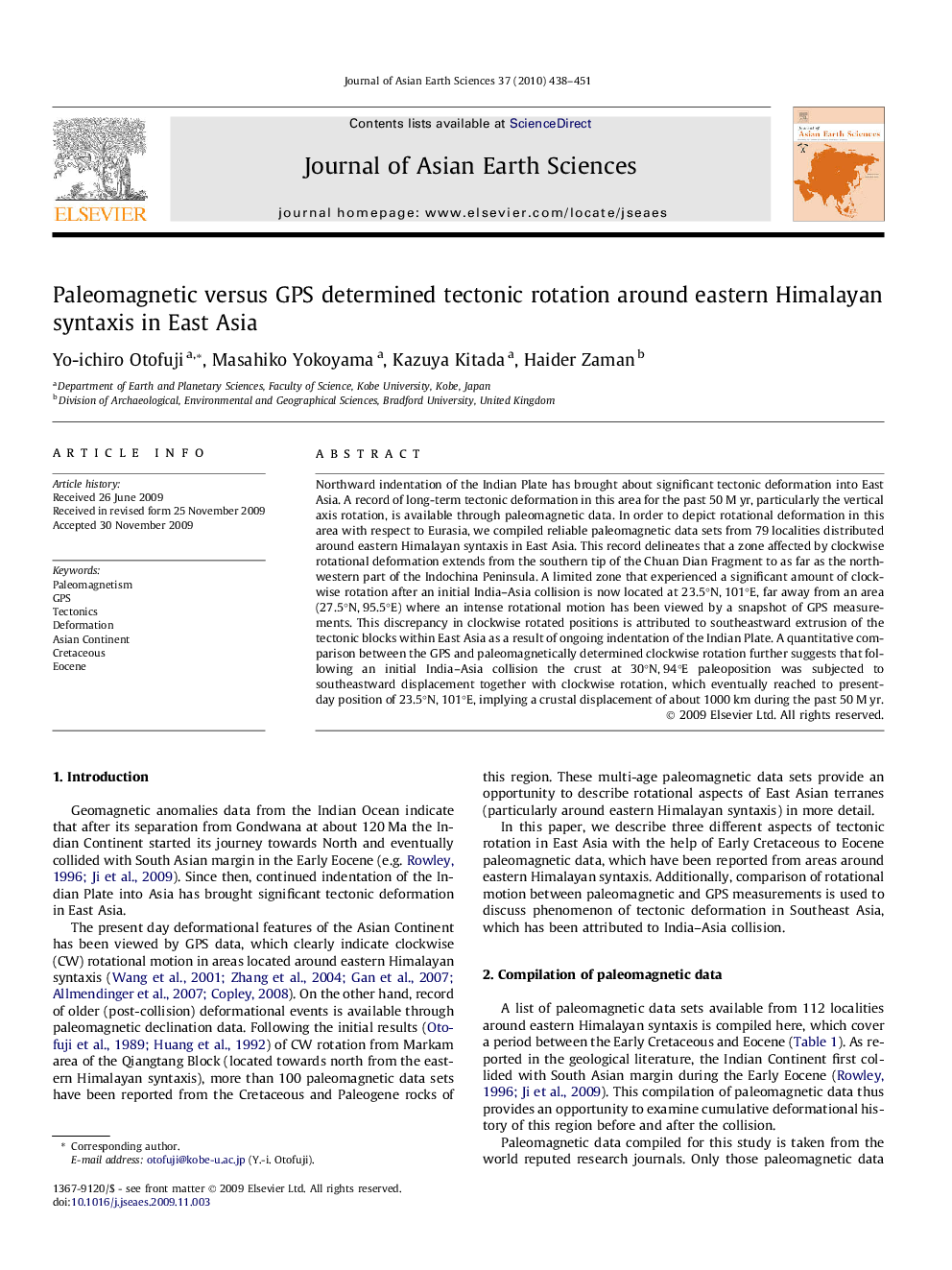| Article ID | Journal | Published Year | Pages | File Type |
|---|---|---|---|---|
| 4732031 | Journal of Asian Earth Sciences | 2010 | 14 Pages |
Northward indentation of the Indian Plate has brought about significant tectonic deformation into East Asia. A record of long-term tectonic deformation in this area for the past 50 M yr, particularly the vertical axis rotation, is available through paleomagnetic data. In order to depict rotational deformation in this area with respect to Eurasia, we compiled reliable paleomagnetic data sets from 79 localities distributed around eastern Himalayan syntaxis in East Asia. This record delineates that a zone affected by clockwise rotational deformation extends from the southern tip of the Chuan Dian Fragment to as far as the northwestern part of the Indochina Peninsula. A limited zone that experienced a significant amount of clockwise rotation after an initial India–Asia collision is now located at 23.5°N, 101°E, far away from an area (27.5°N, 95.5°E) where an intense rotational motion has been viewed by a snapshot of GPS measurements. This discrepancy in clockwise rotated positions is attributed to southeastward extrusion of the tectonic blocks within East Asia as a result of ongoing indentation of the Indian Plate. A quantitative comparison between the GPS and paleomagnetically determined clockwise rotation further suggests that following an initial India–Asia collision the crust at 30°N, 94°E paleoposition was subjected to southeastward displacement together with clockwise rotation, which eventually reached to present-day position of 23.5°N, 101°E, implying a crustal displacement of about 1000 km during the past 50 M yr.
